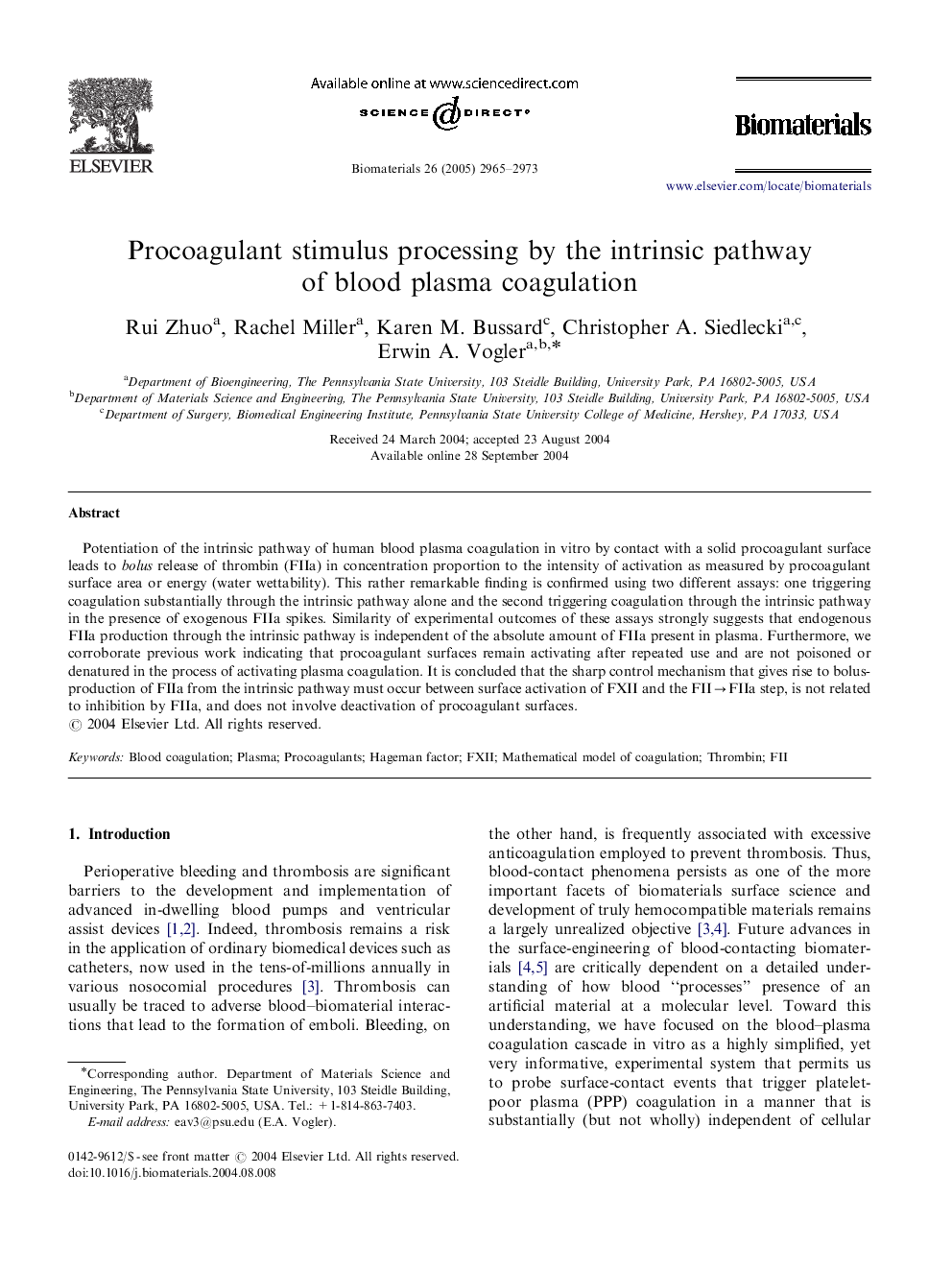| Article ID | Journal | Published Year | Pages | File Type |
|---|---|---|---|---|
| 12245 | Biomaterials | 2005 | 9 Pages |
Potentiation of the intrinsic pathway of human blood plasma coagulation in vitro by contact with a solid procoagulant surface leads to bolus release of thrombin (FIIa) in concentration proportion to the intensity of activation as measured by procoagulant surface area or energy (water wettability). This rather remarkable finding is confirmed using two different assays: one triggering coagulation substantially through the intrinsic pathway alone and the second triggering coagulation through the intrinsic pathway in the presence of exogenous FIIa spikes. Similarity of experimental outcomes of these assays strongly suggests that endogenous FIIa production through the intrinsic pathway is independent of the absolute amount of FIIa present in plasma. Furthermore, we corroborate previous work indicating that procoagulant surfaces remain activating after repeated use and are not poisoned or denatured in the process of activating plasma coagulation. It is concluded that the sharp control mechanism that gives rise to bolus-production of FIIa from the intrinsic pathway must occur between surface activation of FXII and the FII→FIIa step, is not related to inhibition by FIIa, and does not involve deactivation of procoagulant surfaces.
